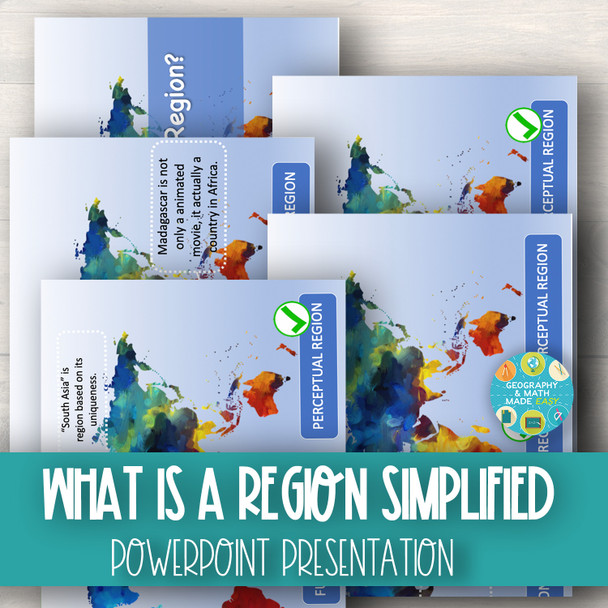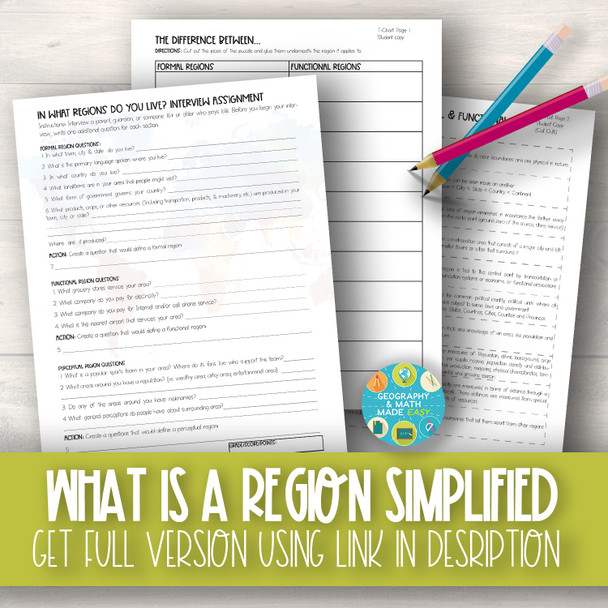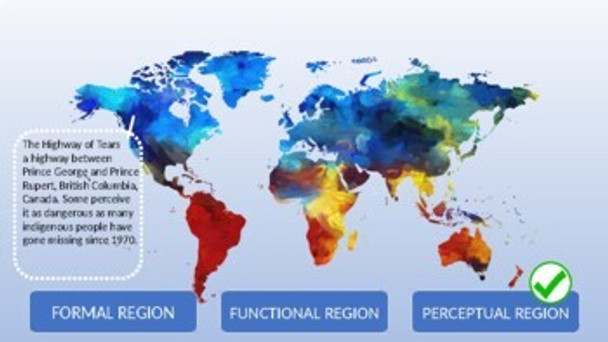Description
Please Note: The instructor/teacher will need to know and understand the concept of REGIONS as this is a concept difficult for young brains to grasp. Even though we simplify it for students, we will need to be ready to verbally or visually explain the concept. Not all students are ready for this high-level concept. This lesson simplifies it as much as possible, but the concept, no matter how simplified, still requires high-level thinking skills and teacher guidance. It takes practice to identify the formal, functional, and perceptual regions. If the instructor/teacher doesn't understand regions, it will be difficult to instruct. This lesson is much better than our textbooks provide.
Help our students understand the complicated concept of "regions."
I often found when I was teaching the 5 Geographical Themes, students grasp location, place, human-environment interaction & movement (ideas, people, goods), but they struggle with regions: formal, functional, and perceptual.
What is the difference between a formal, functional, and perceptual region?
What is a nodal point? How can there be regions that cannot be measured and are specifically based on feelings and perceptions? Can all regions be found on a map? Do they always have a clearly defined boundary?
This PowerPoint provides 7 scenarios in which students are required to decipher whether it is a formal, functional, or perceptual region. You can use it as an introduction or review. You may implement this in different ways.
Disclaimer:
One purchase is for the use of one teacher. If additional teachers would like to use this product, please purchase additional licenses.
Checkout Geography and Math Made Easy for more resources























